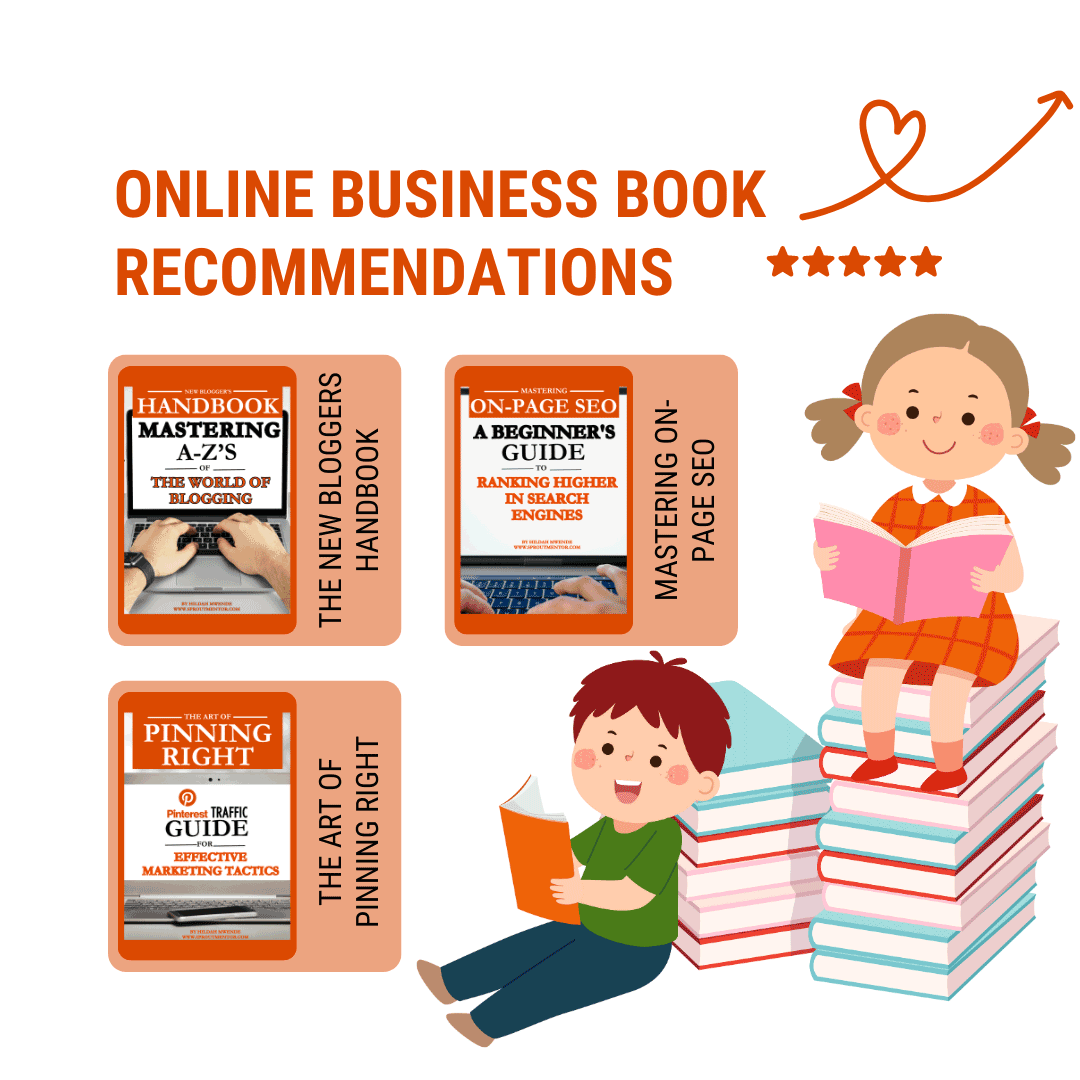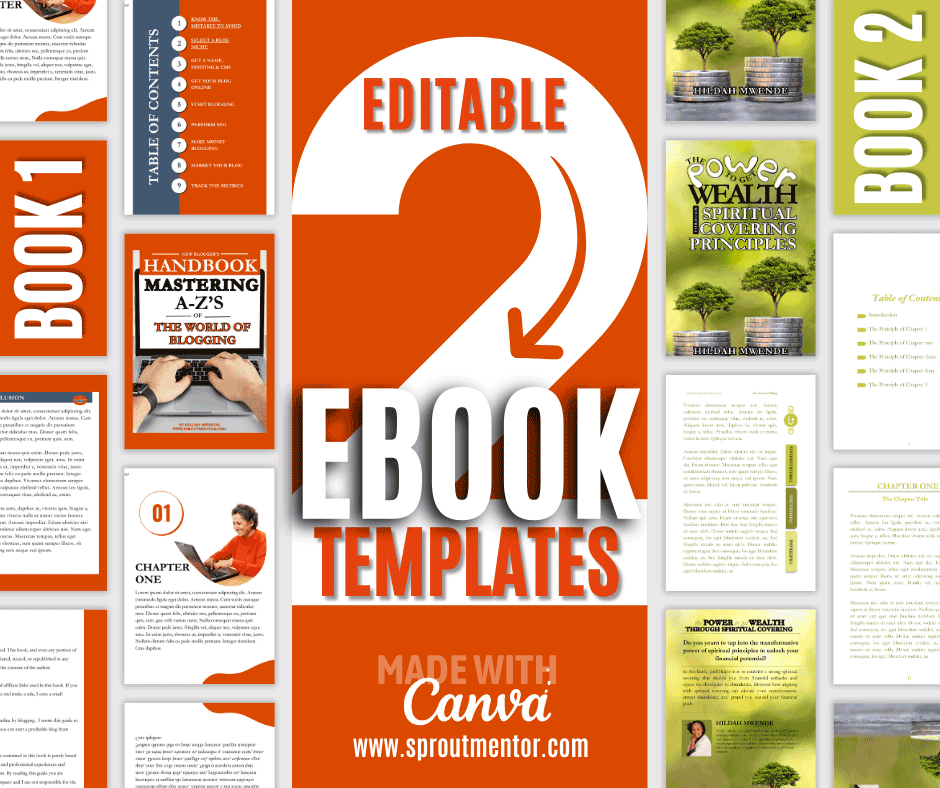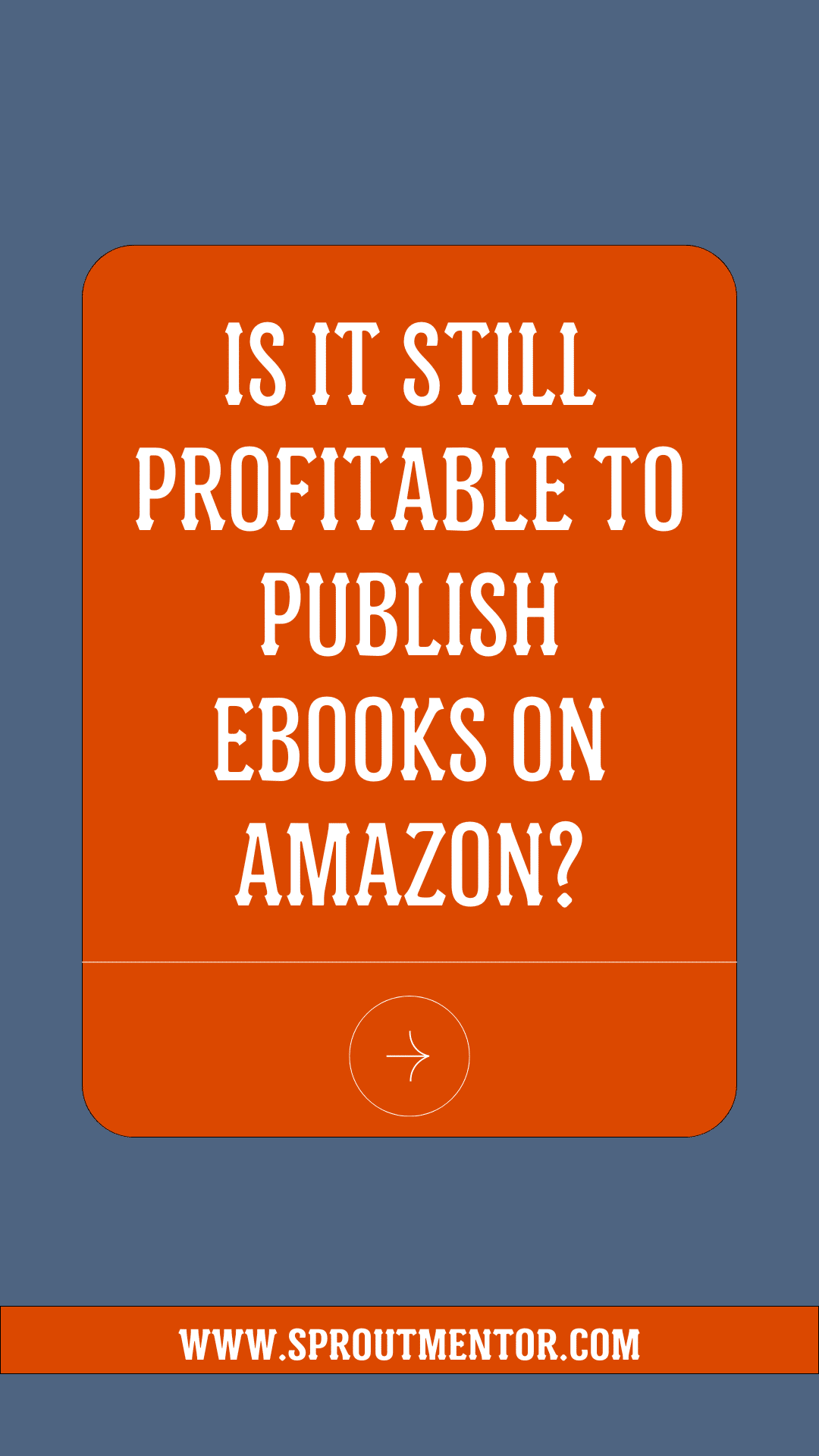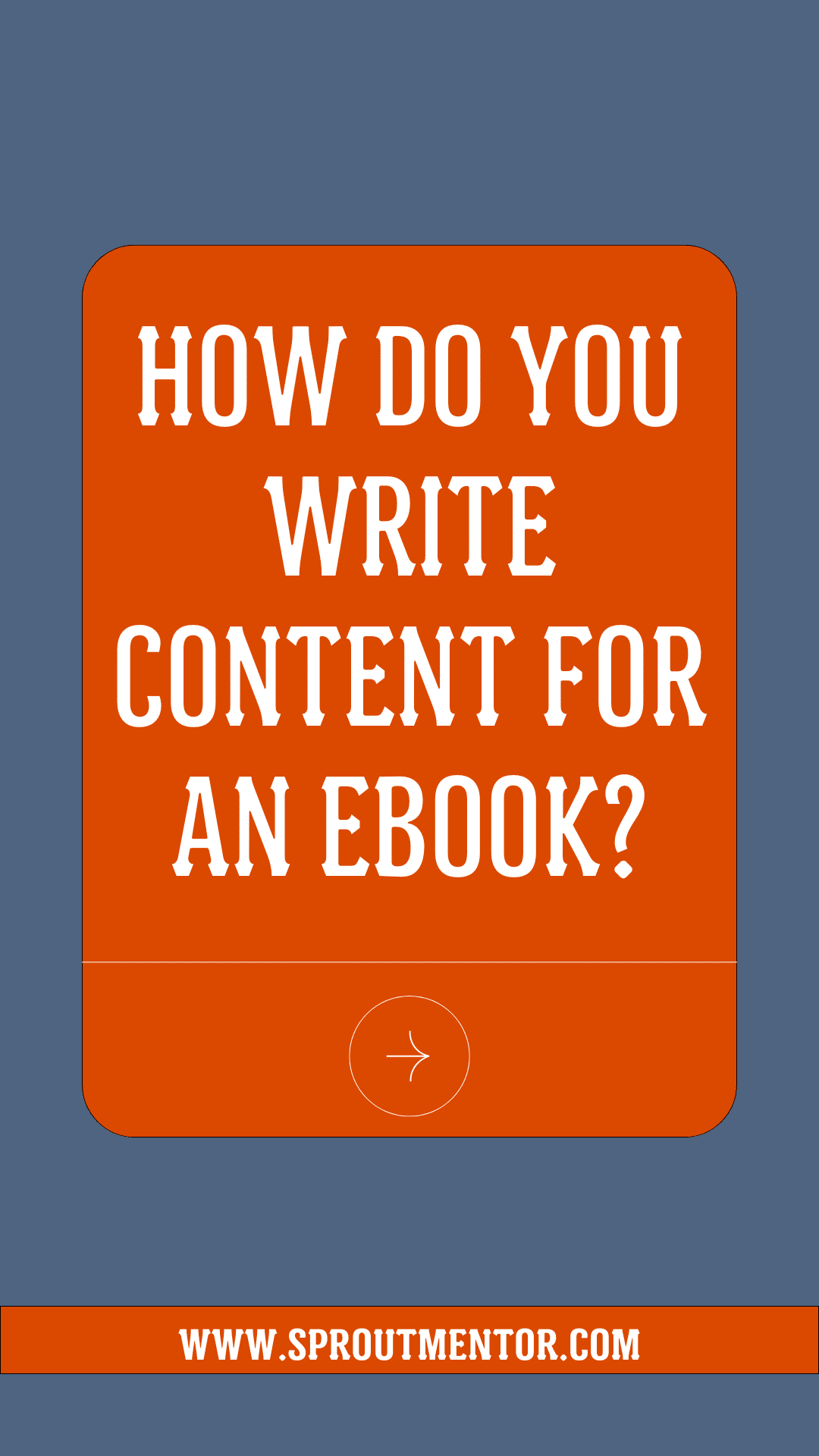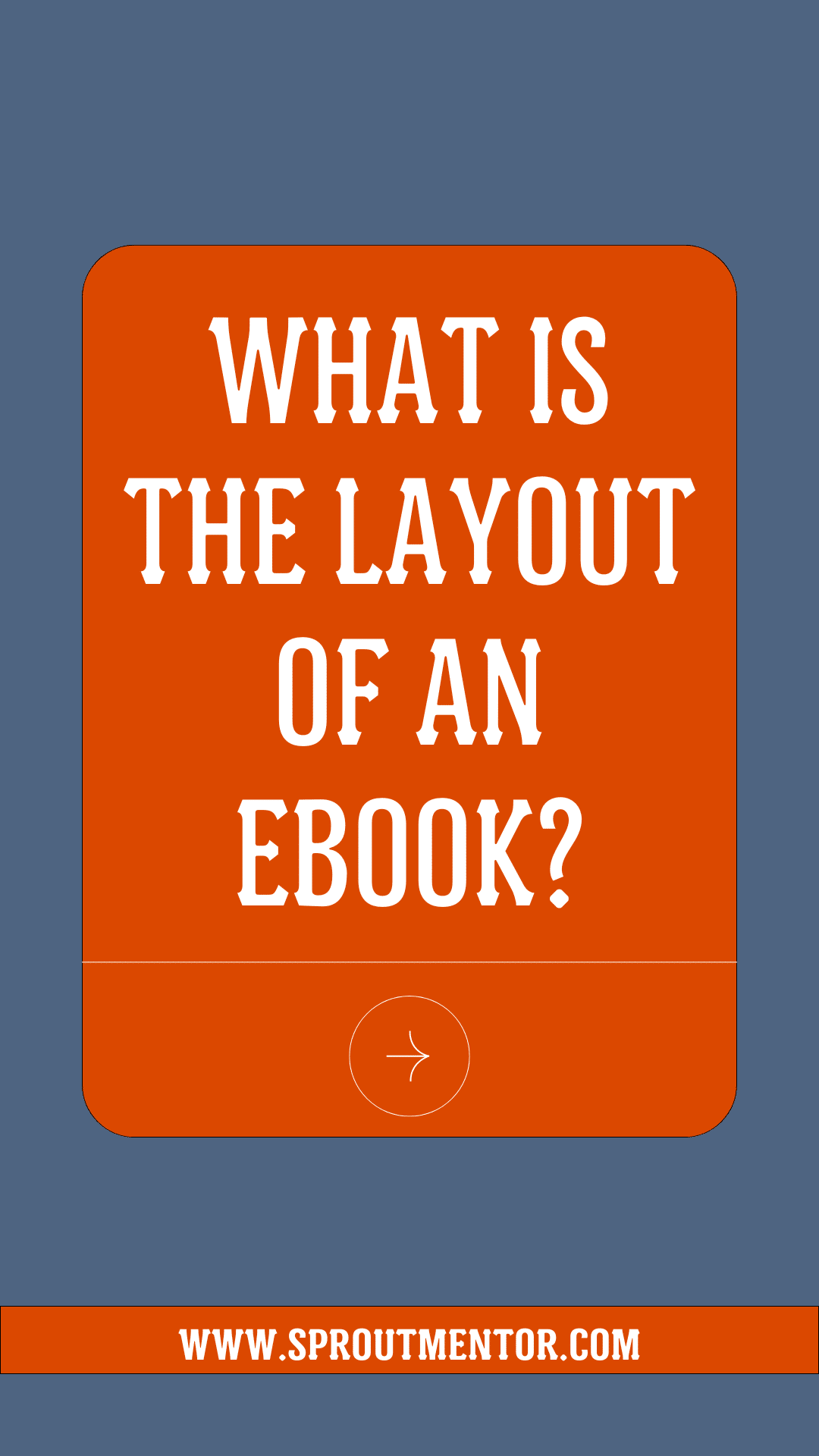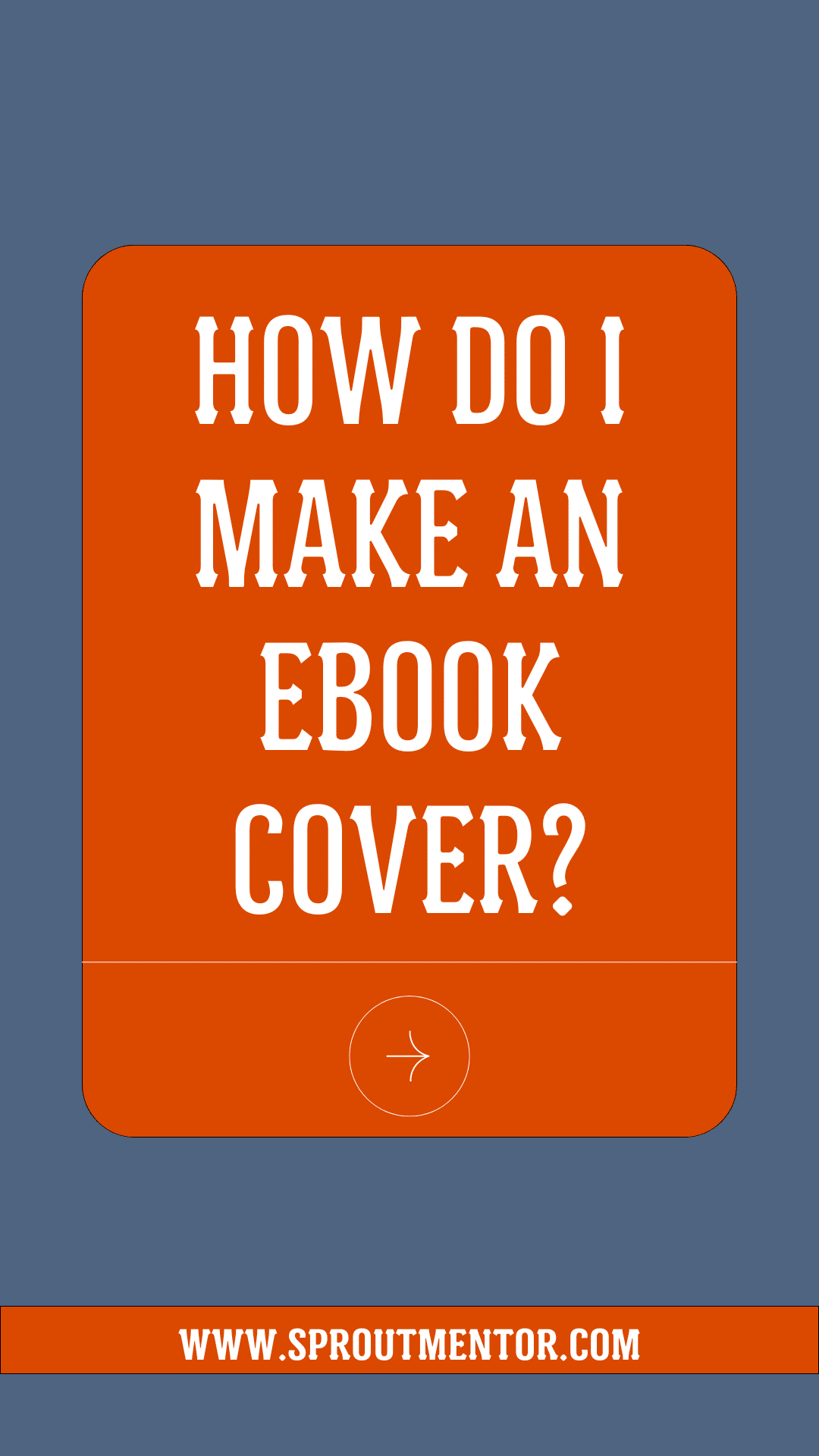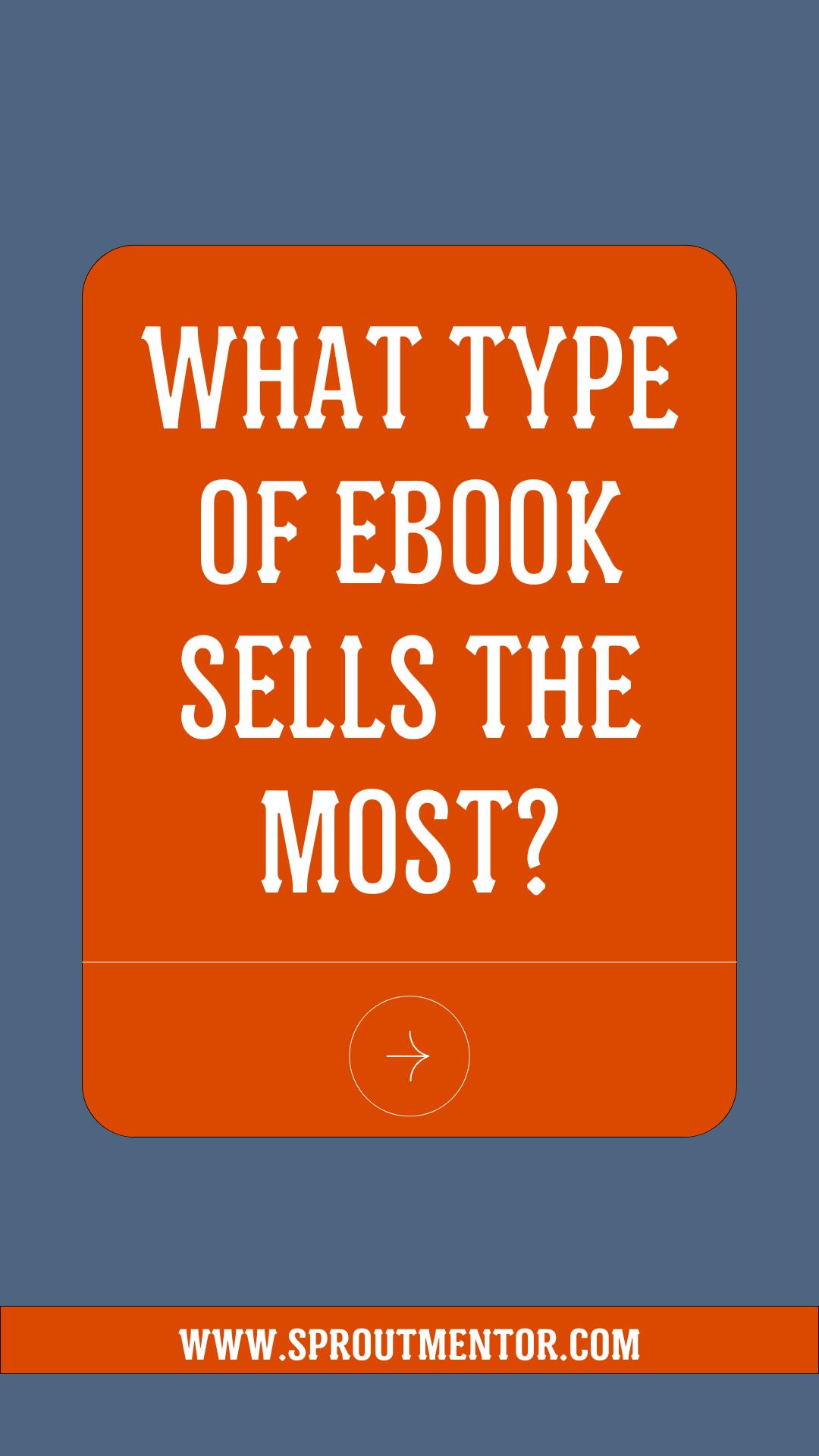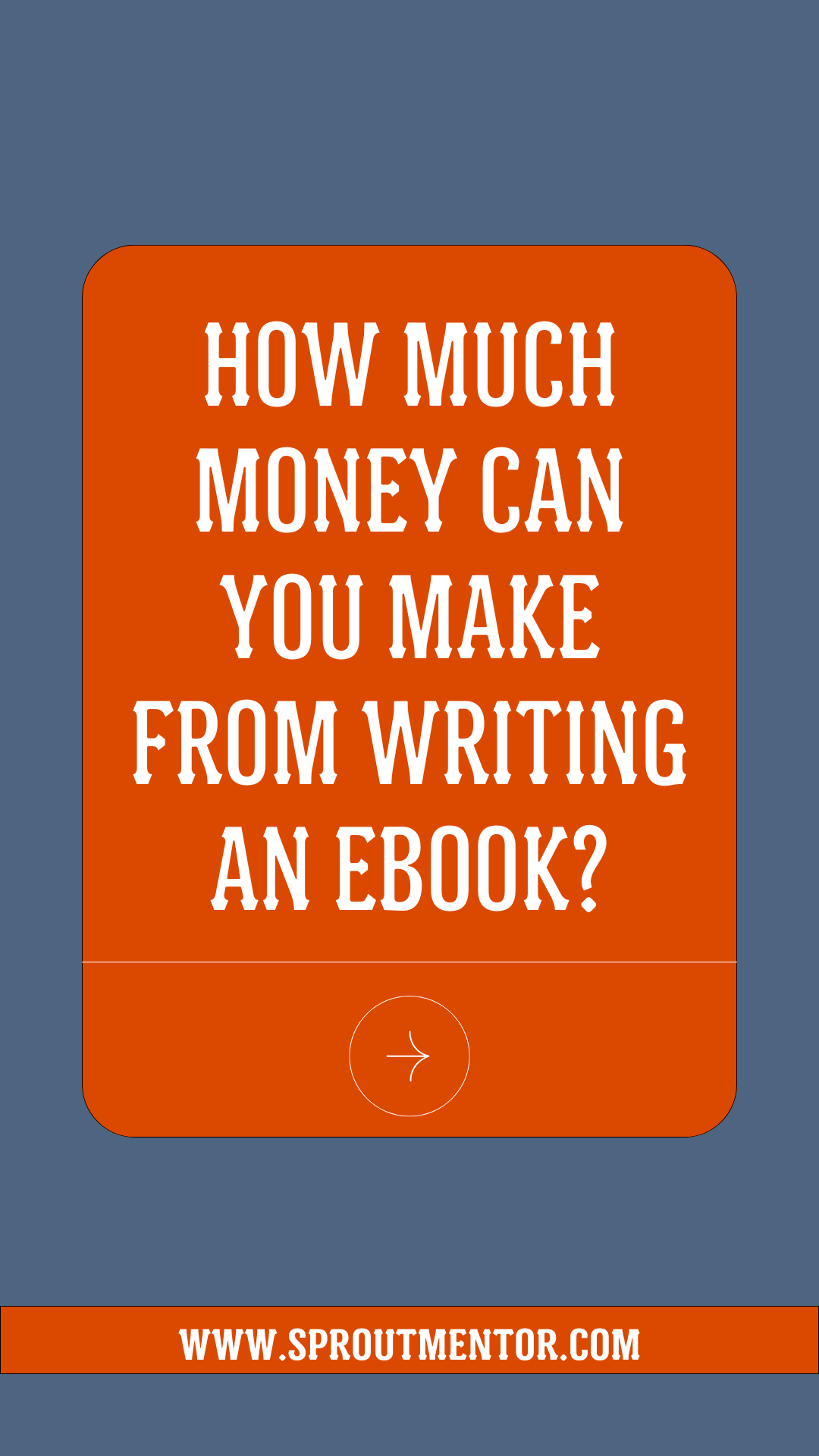How Do You Write An Outline For An Ebook?
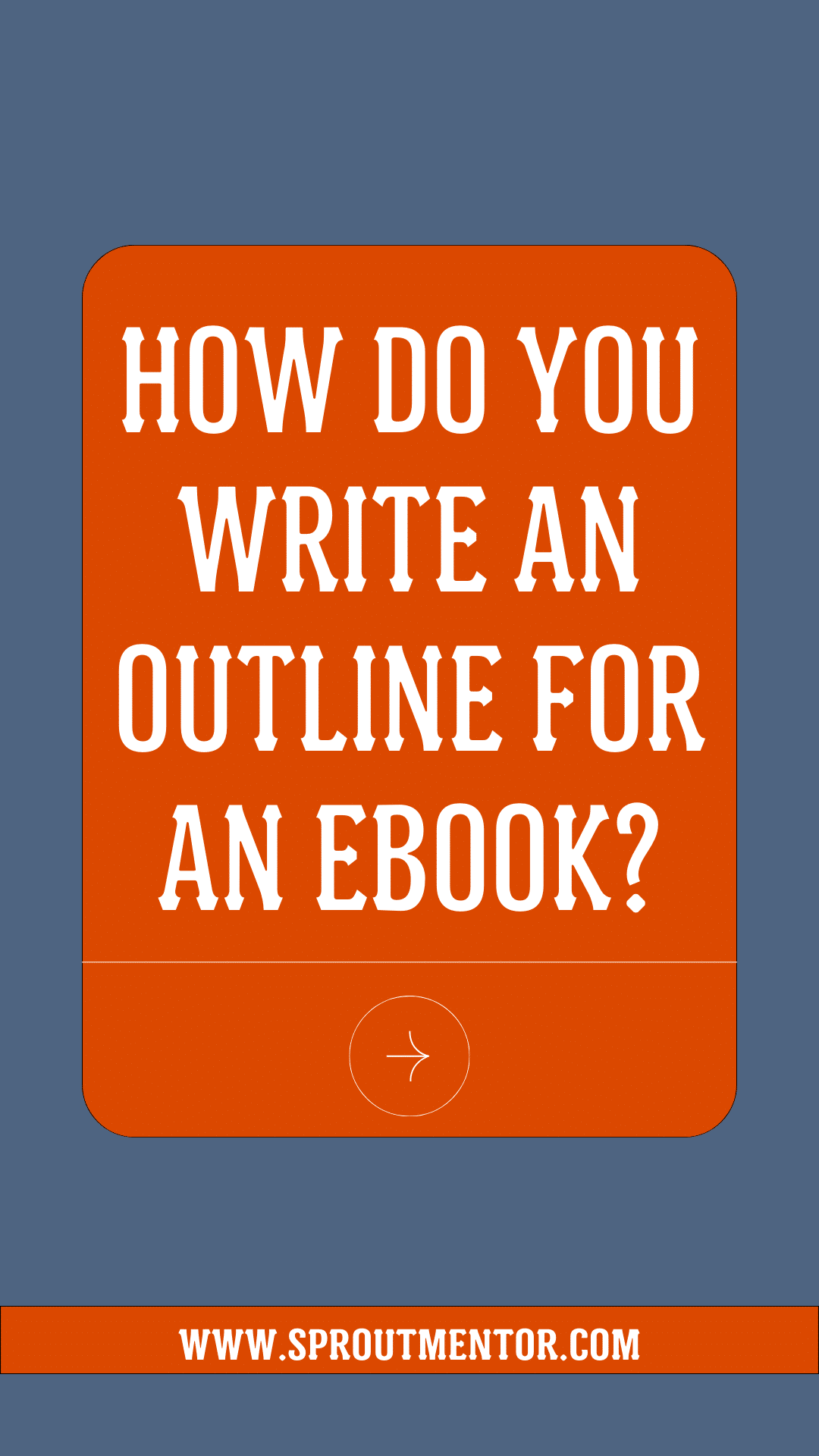
How do you write an outline for an eBook?
An outline acts as a roadmap for your eBook, guiding you through the various topics and concepts you intend to cover.
By organizing your ideas into a structured outline, you ensure that you address all the necessary points and don’t overlook any important aspects of your topic.
It eliminates the risk of meandering or getting off track, keeping your focus on the core concepts and information you want to convey.
In addition to ensuring comprehensive coverage, an outline gives your eBook a structured format that is easier for readers to navigate and comprehend.
Each section or chapter addresses a specific aspect of the topic, making it easier for readers to digest the information in bite-sized portions.
An outline establishes a visual hierarchy of headings and subheadings, making it easier for readers to scan and navigate the eBook.
Clear headings signal transitions between sections and highlight key points, enhancing readability and comprehension.
In this blog post, I will help you discover how to write an outline for an eBook in 9 practical steps.
Share This Blog Post On:
This post might contain affiliate links. I may earn some commission if you click on such links. You shall not incur any extra cost if that happens. Please read our full affiliate disclosure here!
|
DO NOT FORGET TO….
|
How Do You Write An Outline For An eBook?
Understand Your Audience
Here’s how defining your target audience relates specifically to outlining a book:
Content Relevance: During the outlining process, you can prioritize topics, themes, and chapters that align with your audience’s interests and needs.
Tone and Style Alignment: As you plan the structure of your book, consider the tone—whether it’s conversational, formal, or authoritative—and the style—whether it’s narrative-driven, instructional, or analytical.
Chapter Organization: You can sequence chapters in a way that reflects your audience’s journey, addressing their interests and needs progressively. For example, if your audience consists of beginners in a particular field, you may start with foundational concepts before delving into more advanced topics.
Depth and Detail: For instance, if your audience comprises professionals seeking advanced insights, your outline may include in-depth analyses, case studies, or technical explanations. Conversely, if your audience consists of beginners, your outline might focus on providing clear explanations, practical tips, and basic concepts.
Length and Structure: Some audiences prefer shorter, digestible chapters, while others may prefer longer, more comprehensive ones. By considering your audience’s preferences, you can structure your outline to accommodate their reading habits and attention spans, ensuring optimal engagement and retention.
Define Your Purpose
Before diving into the outline, it’s essential to clearly define the purpose of your book.
Ask yourself why you’re writing this book and what you hope to accomplish with it.
The purpose could be to educate, inspire, entertain, persuade, or inform your readers about a specific topic or issue.
By establishing a clear purpose, you provide a guiding light for your outline, ensuring that every section and chapter contributes meaningfully to achieving that purpose.
Set Specific Goals
Once you’ve identified the purpose of your book, it’s time to set specific, measurable goals that align with that purpose.
Goals provide tangible milestones to work towards and help you stay focused and motivated throughout the writing process.
When outlining your book, consider what you want to achieve in terms of content, audience engagement, reach, or impact.
For example, your goals might include publishing a certain number of chapters by a specific deadline, reaching a target word count, or garnering a certain number of positive reviews upon publication.
Use your goals as a roadmap to determine the order and structure of chapters, ensuring a logical progression of ideas and concepts.
Each chapter should have a clear objective or theme that ties back to the overarching purpose of the book.
Brainstorm Ideas for Key Topics, Concepts or Chapters
Brainstorming allows you to tap into your knowledge, experiences, and insights to generate a diverse array of ideas.
Whether it’s jotting down thoughts in a notebook, mind-mapping on a whiteboard, or using brainstorming tools, this process sparks creativity and uncovers new perspectives.
During brainstorming, you can delve into different themes or aspects of your topic that you may not have considered initially.
By exploring various angles, you broaden the scope of your eBook and identify potential areas of interest for your audience.
As you brainstorm, you’ll begin to identify key concepts, theories, or principles that you want to explore further in your eBook.
These concepts serve as the building blocks around which you’ll structure your outline and develop your content.
Categorize and Arrange Brainstormed Ideas
Review your list of brainstormed ideas and identify common themes or topics that can be grouped.
Grouping similar ideas helps streamline your outline and prevents redundancy.
Each category of ideas can become a subtopic or chapter within your eBook.
As you categorize your ideas, consider how they flow together and how they contribute to the overall narrative or argument of your eBook.
Arrange your categories or chapters in a logical sequence that guides readers through the content in a coherent manner.
Think about the progression of ideas and how each section builds upon the previous one to create a cohesive narrative or argument.
Divide Your eBook into Sections
An eBook has three main sections: Front Matter, Body, and Back Matter.
Front Matter:
The front matter of a book encompasses everything that precedes the main body of the text. It serves several important functions, including providing readers with essential information, establishing context, and setting expectations. Here are some key components typically found in the front matter:
Title Page: The title page contains the title of the book, subtitle (if any), author’s name, and sometimes the publisher’s name and logo. It’s the first page readers encounter and sets the tone for the book.
Copyright Page: The copyright page includes legal information such as copyright notice, publication date, ISBN (International Standard Book Number), edition information, and copyright holder’s contact information. It also may contain disclaimers and acknowledgments.
Dedication: Authors often dedicate their books to individuals or groups as a way to express gratitude, admiration, or affection. The dedication page typically comes after the copyright page.
Table of Contents: The table of contents outlines the structure of the book, listing chapters, sections, and sometimes subsections along with their corresponding page numbers. It helps readers navigate the content and find specific topics quickly.
Foreword: A foreword is written by someone other than the author, such as a notable expert or a celebrity, who provides context, endorsement, or personal insight into the book’s subject matter. It adds credibility and interest to the book.
Preface: The preface is written by the author and offers an introduction to the book, explaining its purpose, scope, and background. It may include the author’s motivations for writing the book and any acknowledgments or special thanks.
Acknowledgments: The acknowledgments section allows authors to express gratitude to individuals or organizations that contributed to the creation of the book, such as editors, beta readers, researchers, or funding sources.
Body:
The body of the book contains the main content, where the author presents their ideas, arguments, narratives, or instructions. It’s the heart of the book and varies greatly depending on the genre and subject matter. Here’s what you’ll typically find in the body:
Chapters and Sections: The body is divided into chapters or sections, each focusing on a specific aspect of the book’s topic. Chapters provide structure and organization, guiding readers through the content in a logical sequence.
Text: The bulk of the body consists of the text itself, whether it’s prose, poetry, narrative, analysis, or instruction. Authors use language to convey their message, entertain readers, or inform them about a particular subject.
Visual Elements: Depending on the genre and content, the body may include various visual elements such as photographs, illustrations, diagrams, tables, charts, maps, or graphs. Visuals complement the text and enhance understanding or engagement.
Subheadings: Within chapters or sections, authors may use subheadings to break up the text and highlight different topics or subtopics. Subheadings improve readability and help readers navigate complex content more easily.
Back Matter:
The back matter of a book appears after the main body and typically includes supplementary materials, appendices, and end-of-book elements. Here are some common components found in the back matter:
Appendices: Appendices contain additional information that supports or expands upon the content presented in the body of the book. They may include reference materials, data tables, glossaries, bibliographies, or lists of further reading.
Index: An index is an alphabetical list of terms, topics, names, or concepts mentioned in the book, along with the corresponding page numbers. It serves as a valuable reference tool for readers who want to locate specific information quickly.
Endnotes or Footnotes: Some books include endnotes or footnotes to provide additional commentary, citations, or explanations for specific points mentioned in the text. Endnotes appear at the end of the book, while footnotes are placed at the bottom of the page where the reference occurs.
Afterword: Similar to a preface, the author writes an afterword that appears at the end of the book. It offers reflections, commentary, or updates on the content presented in the body, providing closure or context for readers.
Author Bio: The author bio provides readers with background information about the author, including their credentials, accomplishments, previous works, and personal anecdotes. It helps readers connect with the author and understand their perspective.
Incorporate Visual Elements
Review your outline and identify key points or concepts where visual aids could enhance understanding or engagement. Look for opportunities to represent data, illustrate processes, or visualize abstract ideas.
Visuals add visual appeal to your eBook, breaking up the text and making it more visually stimulating for readers.
This can help maintain reader interest and engagement throughout the eBook.
Visual aids help clarify complex concepts and information by presenting them in a visual format. Visual learners, in particular, may find it easier to understand and retain information when it’s presented visually.
Studies have shown that people process visual information faster than text. By incorporating visuals into your eBook, you can convey information more efficiently and effectively, leading to better comprehension and retention.
Consider the type of visual elements that would best suit the content of your eBook. For example, complex data may be best presented in the form of charts or graphs, while step-by-step processes could be illustrated with diagrams or infographics.
Decide where to integrate visual elements within your outline to ensure they align with the flow of the content and effectively illustrate critical points. Visuals should complement the text and provide additional context or clarity without overwhelming or distracting the reader.
Refine and Revise
Refining your outline is not a one-time task but rather an iterative process that involves multiple rounds of review and revision.
Through refining, you can clarify and fine-tune the central message or theme of your eBook.
This process helps ensure that your outline effectively captures the essence of what you want to convey to your readers.
You can identify areas where the flow may be disjointed or where additional sections may be needed to improve coherence.
Seeking feedback from peers or mentors may offer insights or suggestions that you hadn’t considered, leading to improvements in your content.
Seeking feedback validates your ideas and confirms whether your outline effectively captures the intended message or theme of your eBook.
Positive feedback reinforces confidence in your approach, while constructive criticism highlights areas for improvement.
Prioritize changes based on the impact they will have on improving the overall quality and effectiveness of your outline.
Focus on addressing areas where feedback indicates the most significant room for improvement.
Transition from Planning to Execution
Finalizing your outline is a critical step that prepares you to move forward with confidence into the writing phase of your eBook.
At this stage, your outline serves as a roadmap that guides the writing process and ensures consistency and coherence in your content.
Throughout the writing process, your outline should serve as a reference point that you can consult to ensure that you’re staying true to the overarching goals and vision for your eBook.
By ensuring that your outline is comprehensive, aligned with your goals and audience, and undergoes thorough quality assurance, you set the stage for a successful eBook publication.
In conclusion, crafting a well-structured outline is a crucial step in the eBook writing process.
By following these steps and drawing insights from reputable resources, you can create an outline that lays the groundwork for a compelling and cohesive eBook.
Remember to tailor your outline to suit the needs and preferences of your audience, ensuring that your eBook delivers value and resonates with readers.
|
DO NOT FORGET TO….
|

